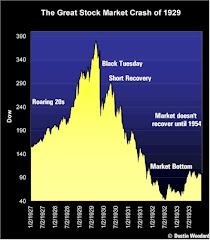
The Economist published an article that reported on public sector pensions.
It is called The great public-sector pension rip-off. It is a short article but highlights the key points about what is wrong with our public sector pensions. Although it is written from the UK it perfectly describes Canadian pensions as well.
JOIN a private-sector company these days and you will be very lucky if you get a pension linked to your final salary. In Britain almost three out of four companies that retain such schemes have closed them to new employees. The cost of paying such benefits, which are partly linked to inflation and offer payouts to surviving spouses, is simply too high now that many retirees are surviving into their 80s.
Yet most new public-sector employees in Britain and America continue to benefit from pensions linked to their salaries. The pension costs facing the public sector are roughly the same as those facing the private sector; their employees are likely to live just as long. But because of the presumed largesse of future taxpayers, governments seem under much less pressure to reduce their pension costs. In 2005 a reform package in Britain raised the retirement age for new state employees, but still left existing employees able to retire at 60.
Note: In Canada the retirement age begins as early as 50 for some public sector workers and most are eligible for retirement beginning at age 55 for full pensions. Many workers in the public sector will spend more time in retirement than they did working. For many the pension income will be far greater than their working income ever was.
Perhaps the real reason why public-sector pension costs have not been tackled is that the full bill has never been revealed to taxpayers. Calculating the cost of a pension scheme depends on two key assumptions. The first is the potential longevity of the employees; the second is the discount rate applied to future benefits. The higher the discount rate, the smaller the liability appears to be. There is a lot of debate about the right discount rate to use, but the conservative approach is to take the cost of government borrowing. Use that rate, and the liability of American state and municipal pension schemes may be $3 trillion—three times the value of all the authorities’ existing debts. In Britain the liability adds up to 85% of GDP.
Even if that figure overstates the problem, there is little doubt that governments are understating their pensions liabilities. When workers in Britain are transferred from the public to the private sector, they are entitled to keep their pension rights; employers who take them on find that their pension costs are around double those estimated by the public sector. The fudge seems likely to continue. A consultation document sent out by the British government suggested that, rather than raising taxes or cutting spending, local authorities should fall short of fully funding their pension liabilities in the short term.
Note: A recent blog of mine called The need for transparency in public sector pensions addressed this issue of the real pension shortfalls that exist.
Public affluence, private penury
There may be an argument for giving some public-sector workers, such as the police or the armed services, higher pay and benefits in the form of pensions. But the cost should be fully accounted for. Today’s opaque pensions system is unfair to private-sector workers, who suffer a triple whammy. First, most are now enrolled in riskier defined contribution (DC) pension schemes, where payouts depend on investment performance. Second, employers make smaller contributions to DC schemes than to final-salary plans, so pensions are likely to be lower. And third, as well as shouldering more of the burden for their own retirement, private-sector workers pay for public-sector pensions via their taxes. There is, in effect, a hidden transfer from private-sector workers to their public-sector peers. In Britain it may amount to as much as 30% of pay.
When the full costs become apparent, taxpayers may demand reform. Cutting costs is not easy: the bulk relate to promises already made. But raising the retirement age for public-sector workers in order to reflect increased life expectancy would be a start. Moving to DC pensions for new entitlements, or to a cheaper version of a defined benefit scheme (such as an average- rather than a final-salary pension) would also help. The greying of the American and British populations will inevitably involve some costs. It would be unfair if the burden was borne disproportionately by private-sector workers.
Here is another excellent article printed earlier this year by the Economist detailing the Pension Predicament. Pension Apartheid



No comments:
Post a Comment